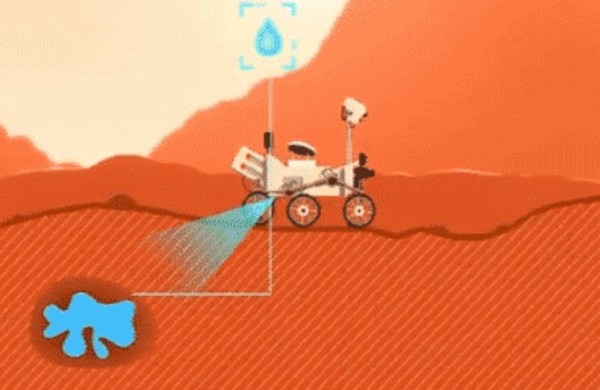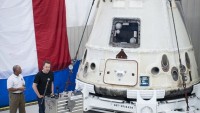NASA Celebrates Curiosity Rover’s 4th Year on Mars with a Video Game
| Arthur Dominic Villasanta | | Aug 05, 2016 07:05 PM EDT |
(Photo : NASA) NASA Mars Rover app
NASA's famous rover, Curiosity, landed on Mars on Aug. 6, 2012 after a nine month-long journey and the U.S. space agency is marking this milestone by releasing a game that lets users drive a rover on Mars.
Named "Mars Rover," the game has a user play the role of a Mars rover driver. Your job is to search for pockets of underground water as the rover climbs up and down hills while earning points along the way.
Like Us on Facebook
You've got to navigate and balance the rover very carefully as you speed along the bumpy Martian surface because one crash and it's "Game Over!"
The Mars Rover game is available as a free app for both Apple and Android mobile phones and tablets and for desktops on the NASA Mars Rover page here.
"We're excited about a new way for people on the go to engage with Curiosity's current adventures on Mars and future exploration by NASA's Mars 2020 rover too," said Michelle Viotti, manager of Mars public engagement initiatives at NASA's Jet Propulsion Laboratory (JPL) in Pasadena, California.
"Using social networks, the user can share the fun with friends. The interest that is shared through gameplay also helps us open a door to deeper literacy in science, technology, engineering and mathematics."
JPL collaborated with "Gamme," a network for game-players, to develop the game.
NASA pointed out that while your app's Mars Rover speeds along the bumpy Martian surface, NASA's rovers such as Curiosity stay in the slow lane. With a top speed of about two inches per second, it takes Curiosity 30 minutes to cross a football field.
NASA engineers play it safe with slow, careful driving. They also use slightly faster computer animations to analyze the path of Curiosity.
Right now, Curiosity is about to begin drilling into a rock called "Marimba" to gather rock powder for on-board laboratory analysis. It's begun a multi-month climb of a mudstone geological unit as it heads toward higher and younger geological features on Mount Sharp, including some rock types that haven't been explored.
Curiosity's mission was to have ended in 2014 but NASA now says it will continue until the rover's nuclear batteries die out in 2025.
TagsNASA, curiosity, Mars Rover, Gamme
©2015 Chinatopix All rights reserved. Do not reproduce without permission
EDITOR'S PICKS
-

Did the Trump administration just announce plans for a trade war with ‘hostile’ China and Russia?
-

US Senate passes Taiwan travel bill slammed by China
-

As Yan Sihong’s family grieves, here are other Chinese students who went missing abroad. Some have never been found
-

Beijing blasts Western critics who ‘smear China’ with the term sharp power
-

China Envoy Seeks to Defuse Tensions With U.S. as a Trade War Brews
-

Singapore's Deputy PM Provides Bitcoin Vote of Confidence Amid China's Blanket Bans
-

China warns investors over risks in overseas virtual currency trading
-

Chinese government most trustworthy: survey
-

Kashima Antlers On Course For Back-To-Back Titles
MOST POPULAR
LATEST NEWS
Zhou Yongkang: China's Former Security Chief Sentenced to Life in Prison

China's former Chief of the Ministry of Public Security, Zhou Yongkang, has been given a life sentence after he was found guilty of abusing his office, bribery and deliberately ... Full Article
TRENDING STORY

China Pork Prices Expected to Stabilize As The Supplies Recover

Elephone P9000 Smartphone is now on Sale on Amazon India

There's a Big Chance Cliffhangers Won't Still Be Resolved When Grey's Anatomy Season 13 Returns

Supreme Court Ruled on Samsung vs Apple Dispute for Patent Infringement

Microsoft Surface Pro 5 Rumors and Release Date: What is the Latest?













